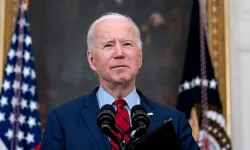While technological developments make people's lives easier, the sedentary lifestyle it leads to brings along health problems such as weight gain and obesity.
According to the World Obesity Atlas 2023 estimates, more than half of the global population is expected to be overweight or obese by 2035, in line with current trends.
More people are turning to weight loss drugs to achieve weight loss. As celebrities and influencers on social media platforms such as TikTok talk about using these drugs to lose weight in a short time, slimming drugs attract more attention.
MOST FAMOUS DRUG OZEMPC
Weight loss drugs have been one of the most searched health trends last year, with brands such as Ozempic, Wegovy, Mounjaro, Zepbound, Phentermine, Rybelsus, Saxenda, Contrave, Victoza, Adipex-P and Qsymia among the most prominent. In addition to helping lower blood sugar levels, these medicines suppress appetite and reduce calorie intake.
Ozempic, approved by the US Food and Drug Administration (FDA) in 2017 for the treatment of type 2 diabetes, was the most sought-after weight loss drug last year. According to JP Morgan's analysis, the number of people using these drugs is estimated to reach 30 million in the US by 2030, about 9 percent of the population.
Denmark's Novo Nordisk, maker of Ozempic and Wegovy, says its target market is the more than 760 million obesity patients worldwide.
According to Morgan Stanley's analysis, the rapid increase in reimbursement for obesity drugs has led to 40 million people in the US having access to them through their health insurance, outstripping the total number of Americans estimated to have diabetes (37 million).
While the cost of the drugs exceeds $10,000 per person per year, the majority of the more than 100 million obese and overweight people in the US are denied access to them.
COMPETITION FROM PHARMACEUTICAL COMPANIES
The growing interest in weight loss drugs is also increasing competition among drug manufacturers.
The market for anti-obesity drugs is dominated by Novo Nordisk of Denmark and Eli Lilly of the US. Big players in the pharmaceutical industry, including Pfizer and AstraZeneca, are also trying to enter the market.
The rise in the shares of Novo Nordisk and Eli Lilly is noteworthy due to the increasing interest in the anti-obesity drug market. Novo Nordisk's shares gained 52.9 percent last year, while Eli Lilly's shares rose 59.3 percent.
Novo Nordisk became Europe's most valuable listed company last year, displacing French luxury goods group LVMH, which includes the Louis Vuitton brand, from the top spot. The pharmaceutical industry in Denmark, dominated by Novo Nordisk, is estimated to account for about 5 percent of the country's economy and is seen to contribute to the growth of the country's economy. While the Danish economy grew by 1.7 percent annually in the first six months of last year, it was noted that this rate would have dropped to 0.3 percent without the contribution of the pharmaceutical industry.
OBESITY DRUGS UNDER WALL STREET SURVEILLANCE
While the increasing demand for weight loss drugs is on Wall Street's radar, major US investment banks are analyzing the market for obesity drugs. While the analyses predict that the market for weight loss drugs will grow, the forecasts differ.
JP Morgan estimates that the anti-obesity drug market will exceed 100 billion dollars by 2030. Goldman Sachs also predicts that the global market for these drugs could reach 100 billion dollars, while Morgan Stanley expects the market size to reach 77 billion dollars by 2030.
Morgan Stanley estimated the global market for anti-obesity drugs at $2.4 billion in 2022, while Goldman Sachs estimated that the market reached $6 billion at the beginning of last year.
FOOD SECTOR MAY BE AFFECTED
Goldman Sachs' analysis suggests that reducing obesity rates could not only improve overall health but also alleviate some of the economic burden caused by the disease.
 The US Centers for Disease Control and Prevention (CDC) estimates that obesity-related medical costs in the US were approximately $173 billion in 2019. According to the World Obesity Atlas, the total cost of obesity, both in terms of health and productivity, is projected to exceed $4 trillion worldwide by 2035.
The US Centers for Disease Control and Prevention (CDC) estimates that obesity-related medical costs in the US were approximately $173 billion in 2019. According to the World Obesity Atlas, the total cost of obesity, both in terms of health and productivity, is projected to exceed $4 trillion worldwide by 2035.
On the other hand, the growing appetite for weight-loss drugs is expected to boost sectors such as biotechnology, while creating headwinds for industries such as food and beverages.
While these drugs could have a significant impact on food and beverage consumption, they could have long-term effects on the food industry and reshape it.
Some companies, such as Walmart, are already reporting that users of these drugs have been found to buy less food than other customers. Barclays analysts point out that these drugs pose a significant threat to the fast food sector, while Morgan Stanley expects a major increase in fresh fruit and vegetable sales.
COULD FORCE THE APPAREL AND AVIATION INDUSTRY TO CHANGE
Some analysts argue that these drugs could lead to changes not only in people's eating habits, but also in their choice of clothes and even in the load they create on airplanes.
An analysis by financial services firm Jefferies Financial suggests that weight loss drugs could help airlines save millions of dollars. The analysis estimates that United Airlines would save $80 million a year by reducing fuel needs if the average passenger weight decreased by about 4.5 kilograms.














